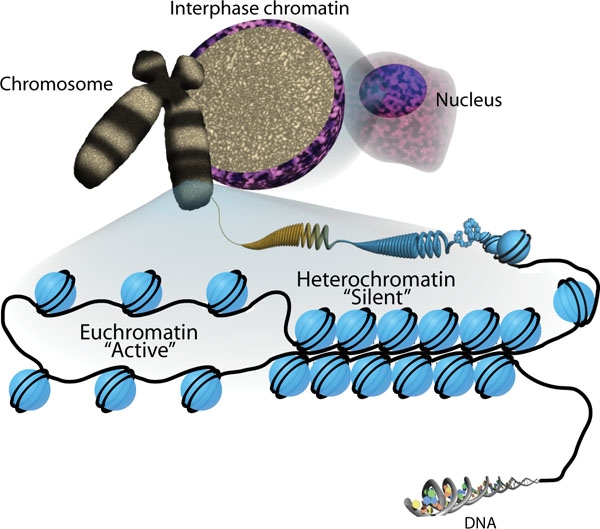Playlist
Show Playlist
Hide Playlist
Hydrogen Bond Zipper and ATP
-
Slides 05 MacromoleculesII CellBiology.pdf
-
Reference List Molecular and Cell Biology.pdf
-
Download Lecture Overview
00:00 So let’s take a moment to talk about how the nitrogenous bases come together to make the steps in this spiral staircase of helical DNA. 00:10 We know that purines pair with pyrimidines and this makes sense because you don’t want the steps to be all wonky as you walk up the staircase. 00:19 So a double ring structure will pair with a single ring structure. 00:23 A purine will pair with a pyrimidine. 00:25 First of all, we’ll see adenine and thymine pair together, making a nice even sized step. 00:32 And then, also, we’ll see that guanine and cytosine pair together. 00:36 So those will always be the pairs that match up. 00:40 Also, you’ll notice that what bonds the nitrogenous bases to each other is a hydrogen bond or two or three hydrogen bonds. 00:50 In the case of guanine and cytosine, you’ll see that there are three hydrogen bonds. 00:57 Whereas with adenine and thymine, you’ll see that there are two hydrogen bonds. 01:02 These hydrogen bonds as a zipper up the middle make DNA easy to separate, make the two strands easy to separate which is really important when we consider DNA replication during cell division. 01:15 We need to be able to unzip it and we need to be able to match up complementary bases in order to make new strands of DNA. 01:22 But that’s the subject of a future lecture. 01:25 One more nitrogenous base based molecule that’s important, just because this is really closely related to DNA, doesn’t mean that it has a similar function of DNA. 01:36 The common theme here though is that it has a five carbon sugar which is ribose, a nitrogenous base, and phosphate. 01:44 However, in this case, we have three phosphate groups. 01:48 So this is adenosine, the particular nitrogenous base, triphosphate, meaning three phosphate groups. 01:57 Now, it could be guanine on occasion or thymine or cytosine. 02:01 Mostly, we will see adenosine triphosphate. 02:04 It is the energy currency for life. 02:08 On occasion, we’ll see guanine triphosphate or GTP used as an energy source. 02:15 But most commonly again, ATP is the main currency.
About the Lecture
The lecture Hydrogen Bond Zipper and ATP by Georgina Cornwall, PhD is from the course The Macromolecules of Life.
Included Quiz Questions
Which of the following statements is correct with respect to DNA base pairs?
- Two hydrogen bonds connect adenine and thymine.
- Two hydrogen bonds connect adenine and cytosine.
- Three hydrogen bonds connect adenine and guanine.
- Two hydrogen bonds connect cytosine and guanine.
- Three hydrogen bonds connect guanine and thymine.
Which of the following is the primary source of cellular energy?
- Adenosine triphosphate
- Guanosine triphosphate
- Cytidine triphosphate
- 5-Methyluridine triphosphate
- Uridine triphosphate
Customer reviews
5,0 of 5 stars
| 5 Stars |
|
1 |
| 4 Stars |
|
0 |
| 3 Stars |
|
0 |
| 2 Stars |
|
0 |
| 1 Star |
|
0 |
she explains it to the point and doesnt waste time going around the topic.




